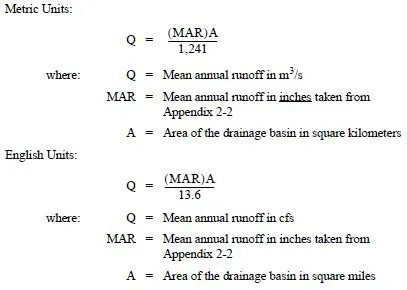The culvert design methodology presented in Section 3-3 assumes that the headwater required to pass a given flow through a culvert will be allowed to fully develop upstream of the culvert inlet. Any peak flow attenuation provided by ponding upstream of the culvert inlet is ignored. If a large enough area upstream of the inlet is available for ponding, the design headwater will not occur, and the culvert will not pass the full design flow. However, by ignoring any ponding effects, the culvert design is simplified, and the final results are conservative. Most culverts should be designed using these assumptions.
If it is determined that the ponding characteristics of the area upstream of the inlet need to be taken into consideration, the calculation of flow becomes a flood routing problem, which entails a more detailed study. Essentially, the area upstream of the inlet acts as a detention pond and the culvert acts as an outlet structure. The culvert can be designed using flood-routing concepts similar to designing a stormwater detention pond, but that methodology is beyond the scope of the Hydraulics Manual. Because the need for this type of culvert design is rare, the RHE shall be contacted for further assistance.
